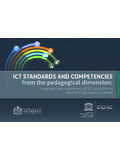Transcription of EDUCATION POLICY OUTLOOK FINLAND - OECD
1 EDUCATION POLICY OUTLOOK FINLAND November 2013 EDUCATION POLICY OUTLOOK : FINLAND OECD 20132 EDUCATION POLICY PROFILE This POLICY profile on EDUCATION in FINLAND is part of the new EDUCATION POLICY OUTLOOK series, which will present comparative analysis of EDUCATION policies and reforms across OECD countries. building on the substantial comparative and sectorial POLICY knowledge base available within the OECD, the series will result in a biennial publication (first volume in 2014). It will develop a comparative OUTLOOK on EDUCATION POLICY by providing: a) analysis of individual countries educational context, challenges and policies ( EDUCATION POLICY profiles) and of international trends and b) comparative insight on policies and reforms on selected topics.
2 Designed for POLICY makers, analysts and practitioners who seek information and analysis of EDUCATION POLICY taking into account the importance of national context, the country POLICY profiles will offer constructive analysis of EDUCATION POLICY in a comparative format. Each profile will review the current context and situation of the country s EDUCATION system and examine its challenges and POLICY responses, according to six POLICY levers that support improvement: Students: How to raise outcomes for all in terms of 1) equity and quality and 2) preparing students for the future Institutions: How to raise quality through 3) school improvement and 4) evaluation and assessment System.
3 How the system is organised to deliver EDUCATION POLICY in terms of 5) governance and 6) funding. Some country POLICY profiles will contain spotlight boxes on selected POLICY issues. They are meant to draw attention to specific policies that are promising or showing positive results and may be relevant for other countries. Special thanks to the Government of FINLAND for their active input during consultations and constructive feedback on this report. Authors: This country POLICY profile was prepared by Beatriz Pont, Hyo Jeong Yee (main drafter), Etienne Albiser, Juliana Zapata and Sylvain Fraccola (statistics and design) of the EDUCATION POLICY OUTLOOK team, which is part of the POLICY Advice and Implementation Division, led by Richard Yelland.
4 Editorial support was provided by Lynda Hawe and Susan Copeland. This profile builds on the knowledge and expertise of colleagues on many project teams across the OECD s Directorate for EDUCATION and Skills, to whom we are grateful. Sources: This country profile draws on OECD indicators from the Programme for International Student Assessment (PISA), the Teaching and Learning International Survey (TALIS), the Programme for the International Assessment of Adult Competencies (PIAAC) and the annual publication EDUCATION at a Glance, and refers to country and thematic studies such as OECD work on early childhood EDUCATION and care, evaluation and assessment for improving school outcomes, equity and quality in EDUCATION , governing complex EDUCATION systems, vocational EDUCATION and training, and tertiary EDUCATION .
5 Most of the figures quoted in the different sections refer to Annex B, which presents a table of the main indicators for the different sources used throughout the country profile. Hyperlinks to the reference publications are included throughout the text for ease of reading and also in the References and further reading section, which lists both OECD and non-OECD sources. More information is available from the OECD Directorate for EDUCATION and Skills ( ) and its web pages on EDUCATION POLICY OUTLOOK ( ).
6 EDUCATION POLICY OUTLOOK : FINLAND OECD 2013 3 TABLE OF CONTENTS HIGHLIGHTS .. 4 Equity and quality Ensuring educational opportunity for all .. 6 Preparing students for the future Well-developed general and vocational EDUCATION and training programmes .. 8 School improvement Trust and proficiency of school leaders and teachers .. 10 Evaluation and assessment to improve student outcomes Focus on self-evaluation .. 12 Governance Autonomous decision-making at the local level .. 14 Funding Mainly from public sources.
7 16 Annex A: Structure of FINLAND s EDUCATION system .. 18 Annex B. Statistics .. 19 References and further reading .. 22 Figures Figure 1. Student performance in reading and impact of economic, social and cultural status .. 5 Figure 2. Upper secondary and tertiary attainment .. 5 Figure 3. Reading performance and percentage of low and top performers .. 7 Figure 4. Students in EDUCATION and not in EDUCATION , by educational attainment and work status .. 9 Figure 5. School principals' and students' views on learning environment.
8 11 Figure 6. Student assessment by purpose .. 13 Figure 7. Decisions in public lower secondary schools, by level of government .. 15 Figure 8. Expenditure on educational institutions as a percentage of GDP .. 17 Spotlight Spotlight 1. Preventing failure by providing early support .. 7 Spotlight 2. Excellence in Teachers .. 11 EDUCATION POLICY OUTLOOK : FINLAND OECD 2013 4 HIGHLIGHTS FINLAND s educational context Students: FINLAND has been and continues to be one of OECD s top PISA performers since 2000, with students performing in the top ranks in reading, science and mathematics between 2000 and 2009, and low impact of students background on educational performance.
9 Adults in FINLAND have also ranked among the top skilled across participating countries in the Programme for the International Assessment of Adult Competencies (PIAAC), with younger adults scoring higher than all adults in FINLAND and young adults in other countries. FINLAND has nine years of basic EDUCATION (comprehensive school) with a strong focus on equity and on preventing low achievement, and offers flexibility at upper secondary level between general and vocational EDUCATION and training options that lead to tertiary EDUCATION .
10 Completion rates in upper secondary and tertiary are higher than the OECD average. In the context of the economic crisis, unemployment rates for 25-64 year-olds increased but remained below the OECD average. Institutions: Finnish society and its EDUCATION system place great importance on their schools and day-care facilities and trust the proficiency of their school leaders, teachers and educational staff, with no national standardised tests or high-stakes evaluation. Teaching is a highly appreciated profession, and teachers are required to have a master's degree that includes research and practice-based studies.










